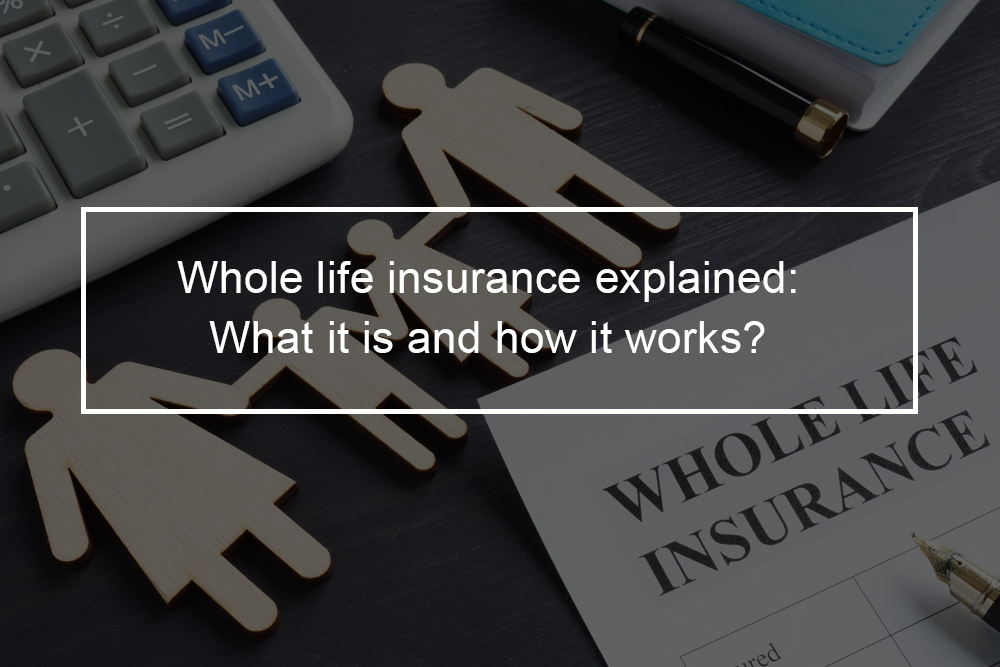
Whole life insurance and cash value work explained?
In simple terms, whole life insurance is a sort of permanent life insurance that pays out a benefit to individuals you list as the recipients for your policy when you die.
However, part of your policy goes toward a cash value element, which is typically a tax-deferred savings account you make excessive use of later in life. You can use the cash value for the following purposes:
- Create a new investment portfolio
- Supplement your income, particularly in retirement
- Get loans at lower interest rates than you would get from a bank.
Whole life insurance is an assured payout that you cannot outlive. Your beneficiaries will get the payout upon your death not unless you fail to make payments or cancel your policy ( and pay costly cancellation costs), or if your cause of death is not included in your policy.
After you die, your heirs will receive the listed death benefit; however, not the cash value that accumulated while you were alive and making payments. Any remaining money value goes to the insurance company, so it’s a benefit to make excessive use of while you are still alive.
The difference between term insurance and whole life insurance
The greatest difference between whole and term life insurance policies is the duration that is covered. Term life insurance offers coverage for particular amounts of time, often for set periods of anywhere from five to thirty years. However, whole life insurance, as discussed above, will pay out eventually when you die as far as your premiums are paid.
When you select term life insurance, you can get more coverage for lower premiums since you will possibly outlive your term, and the insurance organization will not have to pay out a death benefit. It also has no cash value.
Most people select a set term life insurance, being aware they are paying a low premium purely on a policy that is purely for financial protection in the event of their untimely death. If you look at it from a pure insurance standpoint, it is like purchasing car insurance your whole life but never using it since you were never in a vehicle wreck.
Your premiums for personal whole life insurance are contemplated a personal expense, so they are not tax-deductible.
Types of whole life insurance policies?
Five main kinds of whole life insurance
Below is a brief overview:
- Single premium whole life insurance: In this policy, a single large lump payment you make upfront takes care of this plan.
- Traditional whole life insurance: In this policy, your premiums stay the same as far as you keep making them.
- Modified premium whole life insurance: here, you pay lower premiums upfront; however, they get more costly as you age.
- Limited whole life insurance: You choose a set period, like twenty years, for this whole life insurance option. You will still be insured your entire life; however, you will only make payments during the set duration, which indicates your payments are higher than they would be for traditional whole life insurance.
- Survivorship life insurance: These plans enable you to insure two people are popular among spouses. The catch is that it pays out only after both policyholders have died. The benefit is less expensive than paying for two separate whole life insurance policies.
What happens when whole life insurance is surrendered or lapses?
A whole life insurance policy is terminated when the policyholder stops contributing monthly premium payments on time. The life insurance contract is then dabbed as no longer active, and cash value built upon the plan is surrendered. Death benefits are no longer paid out for the surrendered plans.
Some insurance providers enable policyholders to restart their policies within a specified grace period and get their lapsed payments paid within this duration. Go through the fine print to ensure you understand the rules of your whole life insurance policy lapse clause. Generally, reinstatements cost more than one month’s premium payment.
Advantages and disadvantages of whole life insurance
When you are deciding whether a whole life insurance policy works for you, you have to weigh the advantages and the disadvantages. The challenging part is deciding what works best for you in the current financial situation and considering what works best in the long term for your beneficiaries.
Pros of whole life insurance
Whole life insurance is appealing for various reasons, incorporating:
- Whole life insurance is permanent and guaranteed. That indicates your beneficiary will get a payout upon death, regardless of when you die, as far as you have made your payments, and your cause of death is not excluded from the policy.
- It is a good alternative if you have dependents who will require a source of income after you die. The assured payout is an appealing alternative for people with a disabled child, for instance.
- Your payments are often fixed all through the life of the plan. There are alternatives to choose limited whole life insurance plans that have a set term limit or policies that change after you turn sixty-five.
- You can make excessive use of the cash value while you are still alive. Bear in mind that the cash value takes a long duration to build up, meaning you will likely be much older before you can make excessive use of this benefit.
Cons of whole life insurance
Before are several drawbacks to contemplate if you are thinking about whole life insurance:
- You lose the cash value upon your death. Whereas some people make the case that whole life insurance can be used as a long term personal finance retirement planning tool, the fact that cash is lost when you die does not assist this argument.
- Higher premiums: You pay more for the assured payout and lifelong coverage than you would for a term life policy.
- You will pay a large fee to cancel the policy and withdraw the cash value. You will also pay income taxes on any earnings on the policy beyond what you paid for your premiums.
How to select between term insurance vs. whole life insurance?
Deciding whether to buy term insurance or whole life insurance can be challenging. The terms and conditions of life insurance companies and their services and products are sophisticated and hard to digest. However, here is a quick summary of when to consider whole life insurance versus term insurance.
Consider term life insurance if:
- Need the lowest premiums
- You need to replace your income during a particular amount of time, such as while you are raising children or paying for a mortgage.
- You need a permanent life insurance option but can not swing the cost currently. You can transfer your term insurance to whole life insurance policy later on, even though it is expensive
When to choose whole life insurance
- You have to set money aside for family members.
- You have children with lifelong special needs.
- You expect to have expenses like estate taxes that will require to be paid.
If you are trying to identify if whole life insurance is right for you, consider this; if what you are searching for is a life insurance policy that has consistent monthly policy payments and enables you to draw off its rising cash value whereas you are still alive, whole month insurance may be an option for you. Still, if you are not sure, seek financial adviser assistance in figuring out what kind of life insurance is right for you.










